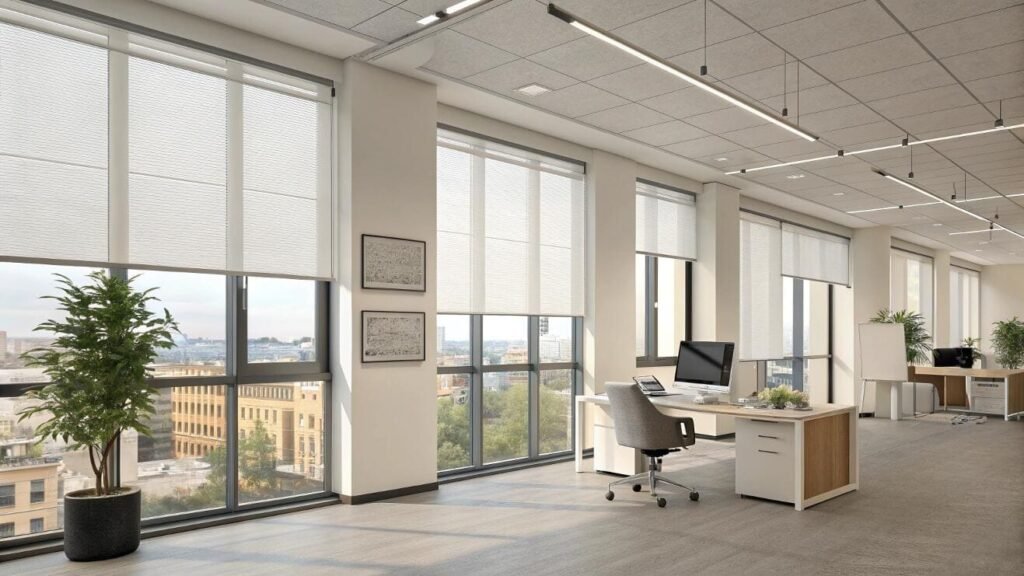Your energy bills keep climbing, season after season. Much of that expensive heated or cooled air is escaping right through your windows, but traditional coverings offer little protection.
Yes, thermal blinds[^1] work exceptionally well. They create an insulating barrier[^2] that can reduce winter heat loss by up to 40% and block a significant amount of solar heat in the summer, leading to real, measurable energy savings and improved comfort.
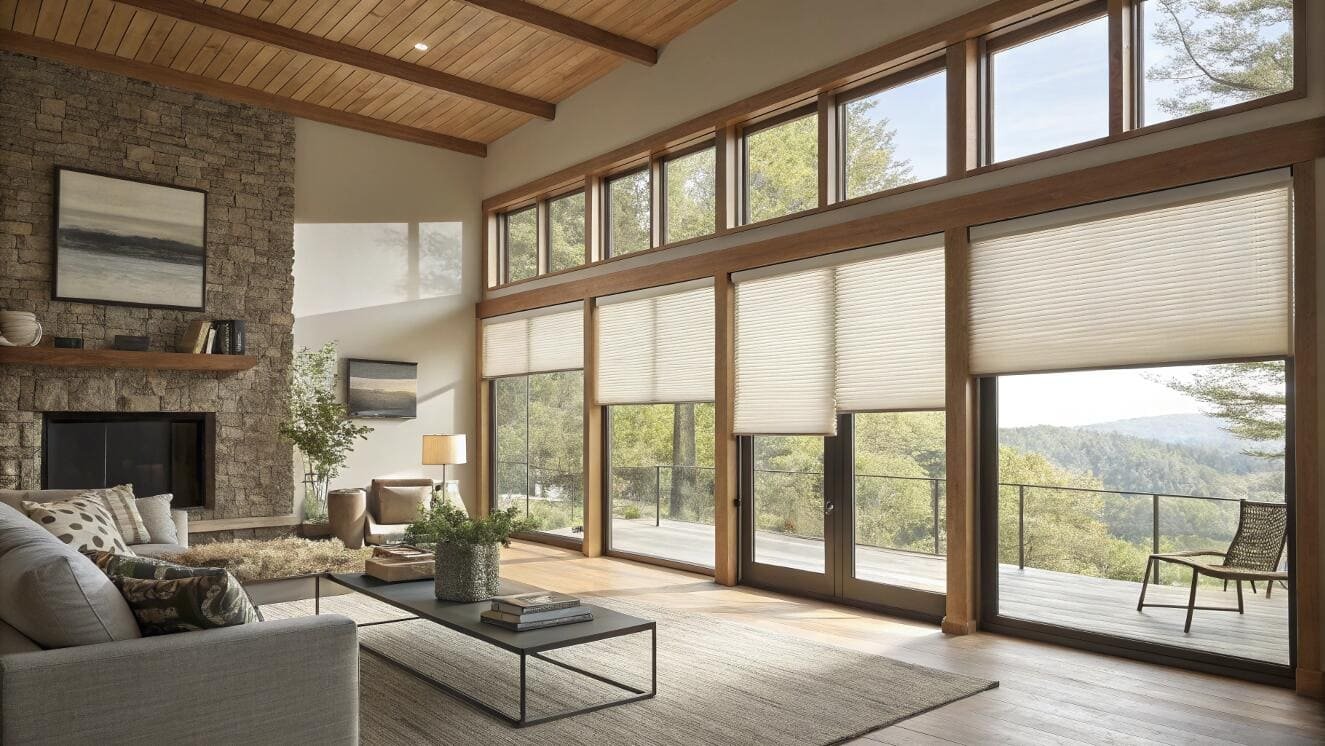
As a supplier for large-scale projects, I've seen the data firsthand. For a project buyer like Emma, who needs to deliver performance and value, thermal blinds aren't just a decorative element; they're a functional upgrade to the building's envelope. They solve the very real problem of energy waste[^3] at the window. But how effective are they really, and are they worth the investment? Let's break down the science and the numbers to see how they perform in the real world.
Is it worth getting thermal blinds?
New window treatments[^4] can be a significant expense. You need to know if the higher cost of thermal blinds will actually pay for itself or if it's just a marketing gimmick.
Yes, thermal blinds are worth it. The energy savings[^5] they provide can lead to a full return on investment in a reasonable timeframe, after which they continue to save you money year after year.
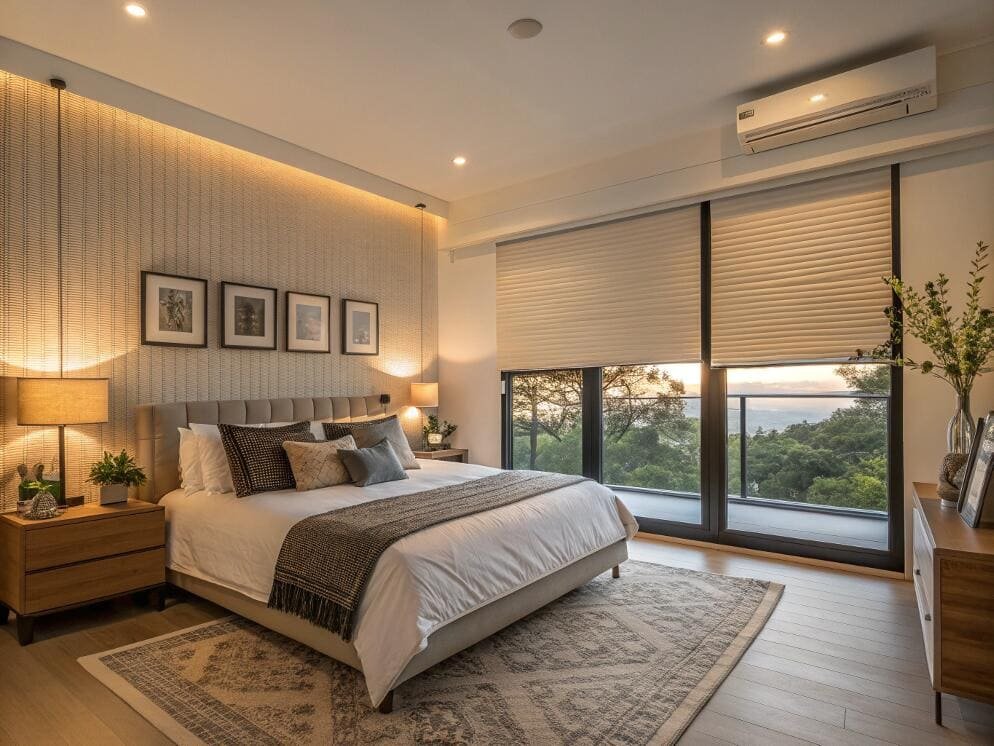
When I talk to contractors, the first question is often about cost versus benefit. The upfront investment for quality thermal blinds is higher than for standard blinds, there's no question. But the value comes from the long-term savings. Think of it as an upgrade to your home's insulation, not just a window covering. For a tangible example, let's look at a case study[^6] from the UK. For a typical 70-square-meter home, the average investment in cellular thermal blinds is around £950. With annual heating savings of about £120, the blinds pay for themselves in around eight years. After that, the savings are pure profit. On top of the financial return, you also gain immediate benefits in comfort[^7], with warmer rooms in winter, cooler rooms in summer, and even a noticeable reduction in outside noise. For a commercial building with hundreds of windows, the payback period can be even faster.
Do thermal blinds keep rooms cool in summer?
The summer sun can turn rooms with large windows into greenhouses. Your air conditioning works overtime, and your electricity bills soar just to keep the space comfortable.
Absolutely. Thermal blinds are extremely effective at keeping rooms cool. Models with a reflective layer[^8] can block up to 75% of solar radiation, stopping the heat before it can enter the room and significantly reducing the load on your AC system.
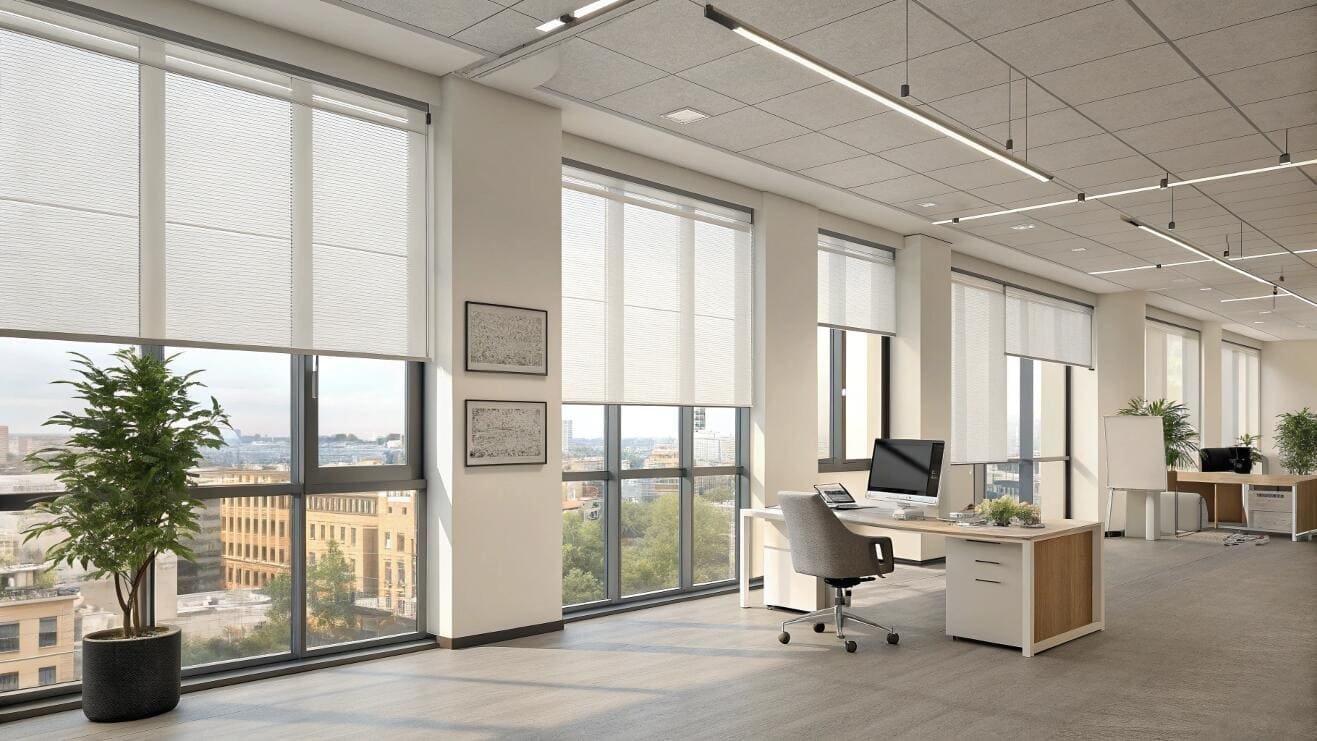
The cooling mechanism is simple but powerful: reflection. The most effective thermal blinds, particularly cellular or honeycomb styles, are designed with this in mind. The cells facing the window often have a specialized coating, like a thin layer of aluminum. This acts like a mirror to the sun's infrared radiation, which is the part that carries the most heat. Instead of being absorbed by the window glass and heating your room, the majority of this solar heat is reflected back outside. This means your air conditioning doesn't have to fight as hard to maintain a cool temperature, which directly translates to lower energy consumption. For offices with large glass curtain walls or west-facing residential windows, this effect is dramatic. It not only saves money but also makes the space vastly more comfortable and usable during the hottest parts of the day.
What blind constructions deliver the highest R-value?
The term "thermal" is used for many products. How can you be sure you're choosing a blind that actually delivers maximum insulation? The key is understanding its construction and R-value[^9].
Honeycomb or cellular blinds, especially those with larger cells (25mm or more) and double-cell designs[^10], deliver the highest R-value. Their pockets trap air, creating a powerful insulating barrier similar to double-glazed windows.
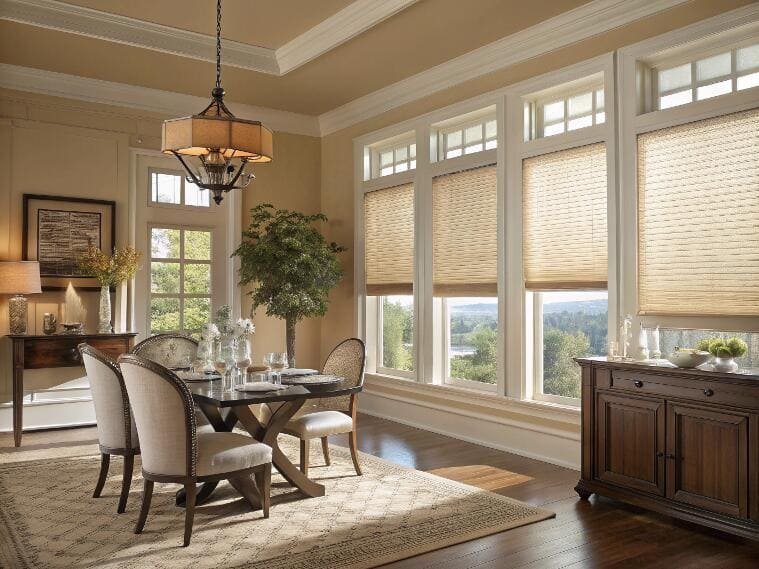
R-value is a simple measure of thermal resistance—the higher the number, the better the insulation. When it comes to blinds, the construction is everything.
| Blind Construction | Insulation Principle | Best Use Case |
|---|---|---|
| Honeycomb/Cellular | Air pockets trap air, preventing heat transfer. | Maximum insulation & sound absorption[^11]. |
| Thermal Roller | A thick fabric with a thermal backing layer. | Cost-effective for large office windows. |
| Lined Roman | Decorative fabric with a separate thermal lining. | Balances aesthetics and performance. |
The undisputed champion is the cellular blind. The hexagonal cells are specifically engineered to trap a pocket of still air. This trapped air is a very poor conductor of heat, which dramatically slows down thermal transfer between the window and the room. Single-cell blinds are effective, but double-cell versions create even more insulating pockets and can achieve R-values approaching that of an extra pane of glass. This structure not only provides the best insulation but also has the added benefit of absorbing sound.
Inside-recess vs. outside-mount: which maximises insulation?
You’ve selected a high-performance thermal blind. But if it's installed incorrectly, you could lose a significant amount of its insulating benefit through drafts and air gaps.
An outside mount that overlaps the window opening is far superior for maximizing insulation. It creates a seal around the frame, trapping a layer of air and drastically reducing heat loss through gaps known as "thermal bridges[^12]."
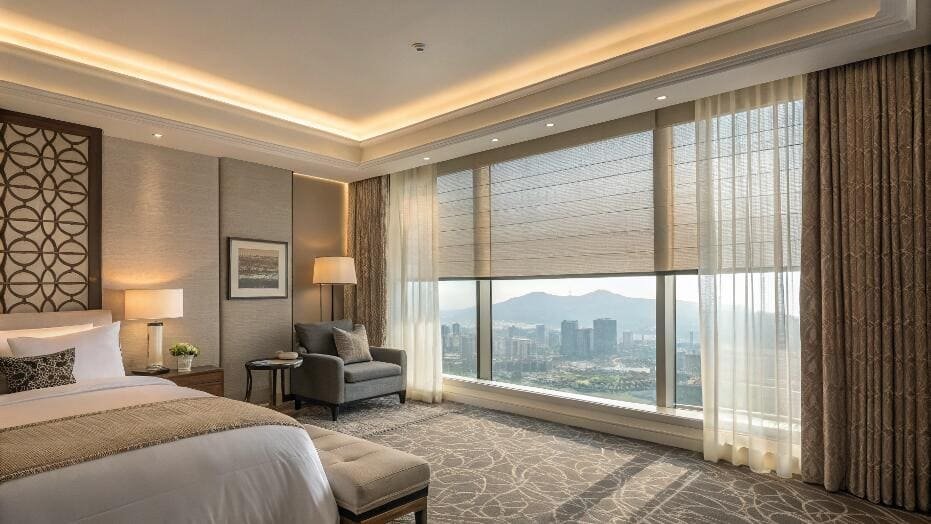
The goal of a thermal blind is to create a sealed pocket of air between the blind and the window glass. An inside mount, while offering a clean, flush look, will always have small gaps on the sides to allow the blind to operate. Air can circulate through these gaps, which reduces the blind's effectiveness. For maximum performance, an outside mount[^13] is the professional choice. By mounting the blind on the wall or trim around the window, you can ensure it overlaps the opening on all sides. I always recommend an overlap of at least 50mm (about 2 inches) on the top, bottom, and both sides. This creates a much more effective seal, trapping air and preventing drafts. This simple installation choice[^14] can be the difference between good performance and great performance, helping your clients get the full energy-saving benefit they paid for.
Are thermal blinds always blackout?
You need a blind for a bedroom or a home theater. You assume "thermal" also means total darkness, but this is a common and often disappointing mistake.
No, thermal blinds are not always blackout. A blind's thermal property comes from its insulating structure or backing, while its blackout property[^15] comes from an opaque layer that blocks light. Some have both, but you must check.
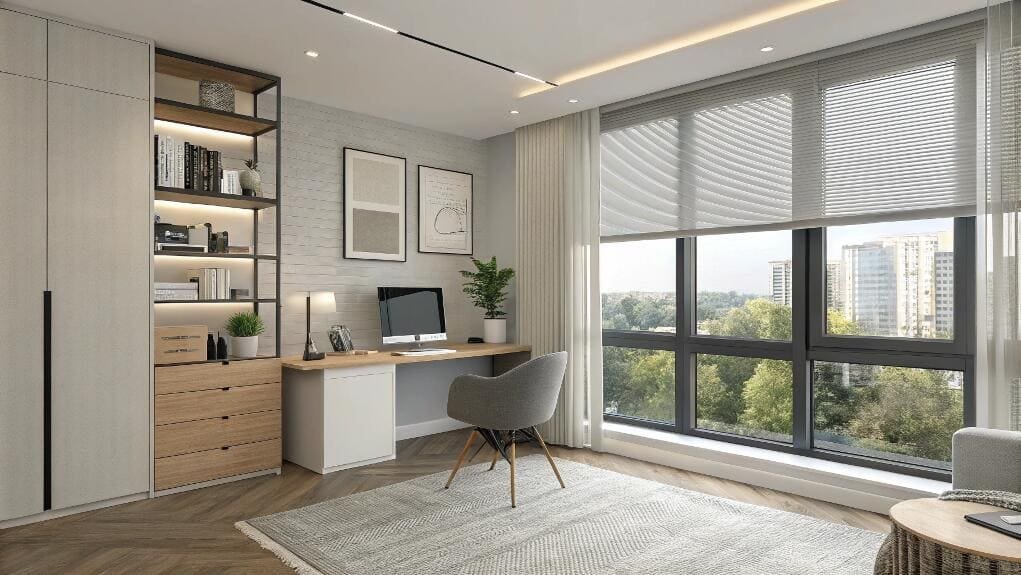
This is a critical distinction that I always clarify with my clients. The function of a thermal lining is to reflect heat and trap air to provide insulation. It might darken a room, but it is not engineered to block 100% of light. A blackout lining, on the other hand, is made with an opaque material specifically designed to prevent any light from passing through the fabric itself. It's entirely possible to have a light-filtering thermal blind that offers excellent insulation but still fills the room with a soft glow. If your project requires cinema-grade darkness, you must specify a product that is explicitly labeled as both "Thermal" and "Blackout." For the ultimate solution, some designers I work with will layer two separate blinds: a blackout roller shade mounted inside the frame and a thermal Roman shade mounted on the outside, gaining the absolute best of both worlds.
How do you prevent moisture build-up[^16] from thermal blinds?
You've successfully insulated your window with a thermal blind. But now you notice condensation or even mold forming on the glass. What's going on, and how do you fix it?
Thermal blinds don't cause condensation, but by creating a tight seal, they can reveal a humidity problem. To prevent moisture, ensure proper ventilation by slightly opening the blind at night or using a dehumidifier.
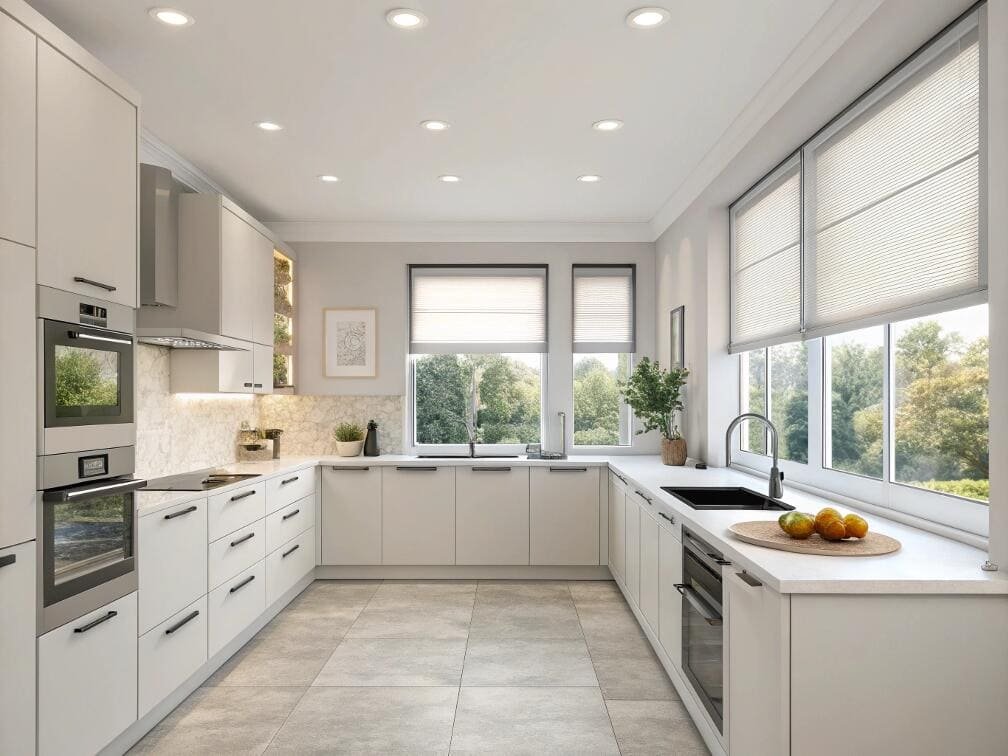
This is a science problem, not a product defect. Condensation forms when warm, moist indoor air comes into contact with a cold surface, like your window pane in winter. A highly effective thermal blind makes the glass even colder by blocking room heat from reaching it, which can increase the potential for condensation if you have high indoor humidity. The blind isn't creating the moisture; it's just making the conditions for condensation more ideal. The solution isn't to get rid of the blind; it's to manage the indoor humidity. For my clients in humid climates, I recommend two simple practices. First, slightly raise the blinds by an inch or two at night to allow some air to circulate against the glass. Second, aim to keep your home's relative humidity below 60%. You can achieve this by using bathroom and kitchen exhaust fans, or by running a dehumidifier during colder months.
How do you specify thermal blinds in commercial tenders[^17]?
For a large commercial project, your tender document is your contract. Vague language like "install thermal blinds" will lead to confusion, incorrect products, and budget overruns.
Your tender should specify the exact blind construction (e.g., "single-cell honeycomb, 25mm"), the required fabric properties (e.g., "thermal lining with blackout option"), and the precise mounting method (e.g., "outside mount with 50mm overlap").
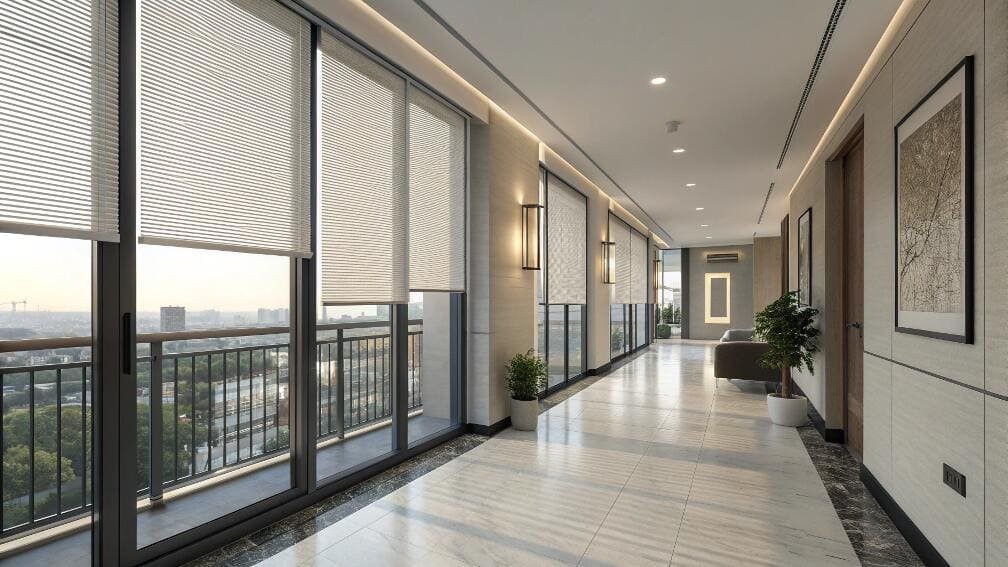
For a project manager like Emma, a bulletproof specification is non-negotiable. It protects the client, the contractor, and the supplier. It ensures everyone is bidding on and supplying the exact same product, eliminating ambiguity. When writing a tender for thermal blinds, you must move beyond generic terms. Instead of "thermal roller blind," specify: "Motorized roller shade, fabric to be [Fabric Name/Code] with specified thermal backing, mounted within a 4-inch extruded aluminum cassette." For honeycomb blinds[^18], define the cell size and type. Always include the mounting requirements, referencing the architectural drawings and explicitly stating overlap dimensions for outside mounts or deduction allowances for inside mounts. This level of detail ensures you get the performance you designed for and allows for true apples-to-apples bid comparisons. It removes guesswork and guarantees a quality outcome.
Conclusion
Thermal blinds are a proven, effective technology. They deliver real energy savings, enhance comfort, and offer a solid return on investment when specified and installed correctly for any project.
---
[^1]: Explore the advantages of thermal blinds for energy efficiency and comfort in your home.
[^2]: Understand how insulating barriers work and their importance in energy-efficient window treatments.
[^3]: Learn how thermal blinds can help minimize energy waste in your home.
[^4]: Find out which window treatments are most effective for improving energy efficiency.
[^5]: Learn how thermal blinds can significantly reduce your energy bills and improve home comfort.
[^6]: Examine real-world examples of thermal blinds' effectiveness and ROI.
[^7]: Learn how thermal blinds improve indoor comfort throughout the year.
[^8]: Understand how reflective layers in thermal blinds help reduce heat gain.
[^9]: Discover the significance of R-value in determining the insulation effectiveness of blinds.
[^10]: Learn how double-cell designs enhance insulation and energy efficiency in window treatments.
[^11]: Explore how thermal blinds can also help in reducing noise levels in your space.
[^12]: Understand the concept of thermal bridges and their impact on energy efficiency.
[^13]: Explore how outside mounting can maximize insulation and energy savings in your home.
[^14]: Discover how proper installation can enhance the performance of thermal blinds.
[^15]: Clarify the difference between thermal and blackout properties in window treatments.
[^16]: Learn effective strategies to manage humidity and prevent condensation with thermal blinds.
[^17]: Get tips on writing precise specifications for thermal blinds in commercial projects.
[^18]: Find out why honeycomb blinds are considered the best for insulation and energy efficiency.
Partner with VelaBlinds for Your Next Project
Smart window treatments shouldn't be complicated. After working with 500+ distributors and contractors worldwide, I've streamlined the process to get you quality products, competitive pricing, and reliable support - every time.
Why project professionals choose VelaBlinds:
- ✅ Fast, Accurate Quotes - Detailed specs and pricing within 24 hours
- ✅ Transparent Pricing - No hidden fees, volume discounts clearly outlined
- ✅ Quality Assurance - Direct partnerships with certified OEM manufacturers
- ✅ Project Support - Dedicated account manager from quote to delivery
Start your next project:
📧 Quick Quote: Send your requirements to info@velablinds.com
📱 Direct Contact: WhatsApp +86 137 2012 8317
🌐 Browse Solutions: https://velablinds.com/
📁 Product Resources: Access spec sheets, catalogs & project files
Paul Chen, Founder
"I built VelaBlinds to solve the real challenges I faced as a project buyer - long lead times, unclear specs, and unreliable suppliers. Let's discuss how we can power your projects with smarter blinds."
Serving distributors and contractors across North America, Europe, and Australia since 2018.

